Fact #4: 3000 Golden Retrievers Are Participating In A Study To Help Increase Golden Retriever Health
The Morris Animal Foundation launched the Golden Retriever Lifetime Study in 2012.
Together with veterinarians and the participating golden retrievers and their owners, they’re collecting data about their health, environment, and behavior to find potential risk factors for cancer and other diseases.
My Dog Seems To Only Have Skin Or Coat Problems At Specific Times Of The Year Why Is This
Some dogs may suffer from skin irritation related to dry winter conditions, particularly from lack of humidity in our homes. Other dogs that have allergies to pollens from trees, plants, or grass may develop skin problems during pollen season – this may occur in the spring with tree pollens, or during summer or fall for plant pollen allergies. Some dogs are allergic to fleas or other biting insects and can develop a rash or patchy hair loss with even a single insect bite.
If you bathe or groom your dog and the skin or coat problem returns quickly, you should bring him or her to your veterinary clinic for an examination. Sometimes, skin problems such as excessive dandruff, doggy odor, a greasy coat, or excessive shedding can indicate a more serious underlying problem. Sometimes this problem will be easy to diagnose and treat, but occasionally, the underlying disorder can present a diagnostic challenge and might even require referral to a dermatologist. Once the underlying problem is diagnosed, the appropriate treatment can be prescribed to control your dog’s symptoms.
Your take home message is that your dog’s general coat appearance may be the first indicator of health problems. A healthy dog will not shed excessively and will have a shiny coat that is free from dandruff or greasiness. Before reaching for the bottle of shampoo, think about whether that lackluster coat could be telling you something else. If you have any concerns, contact your veterinarian for a consultation.
When To Call The Vet For An Appointment Though It May Not Be An Immediate Emergency
Some injuries, illnesses or symptoms may not mean it’s an emergency, but after monitoring the situation and seeing symptoms not improve or maybe even get worse for a day or two, you should call a vet to make an appointment.
As a general rule of thumb, you should consider making an appointment to see your vet when you notice anything out of the ordinary with your Golden Retriever.
If you see any sudden and prolonged changes with their temperament, behavior, toilet habits, level of water and food intake, energy and awareness levels or the way they look and feel, even if the changes are small and subtle, then you should consider calling your vet.
Dogs are creatures of habit and changes are rare. So a change so large that you spot it will have a definable cause and if you cannot state what this after a little thought, it could be a medical reason so you should discuss it with your vet.
I’m not saying you should call them for every single cough, scratch and isolated case of runny poop, but if a symptom listed below lasts for anything over 48 hours you should seek professional advice:
Many of these things can be classed as every day and passing problems that do not need any medical intervention.
For instance, every dog, and I mean every dog, will have sickness and diarrhea many, many times in their lives. They will eat grass, poop and all sorts of things that will upset their tummies for a few hours.
What Role Does Regular Grooming Play In The Appearance Of My Dog’s Coat And Skin
All dogs benefit from regular grooming to remove loose hairs and dead skin cells, to keep the coat free of dirt, debris, and external parasites, and to distribute natural skin oils along the hair shafts.
“All dogs benefit from regular grooming.”
Dogs with long, silky or curly coats require daily brushing to keep their hair from becoming tangled or matted, especially around the ears, in the armpits, or along the back of the legs. Dogs with short hair coats may require less frequent brushing. However, daily brushing of any dog that sheds will cut down dramatically on the amount of loose hair and dog dander floating around the home and will also cut down on the amount of hair that the dog swallows in the course of self-grooming with his tongue.
Regardless of the type of hair coat, you should inspect your dog’s coat every day to make sure there are no tangles or clumps that have developed under the armpits, in the groin, or behind the ears. After a romp through the grass or in the woods, it is a good idea to look for burrs or twigs that might have become trapped in the coat and could potentially cause irritation.
If you regularly check your dog’s coat and skin, you will also have a better chance of detecting any unusual lumps and bumps, parasites such as fleas and ticks, or areas of sensitivity on your dog’s body.
These Times Are An Emergency And You Simply Must Call The Vet Immediately
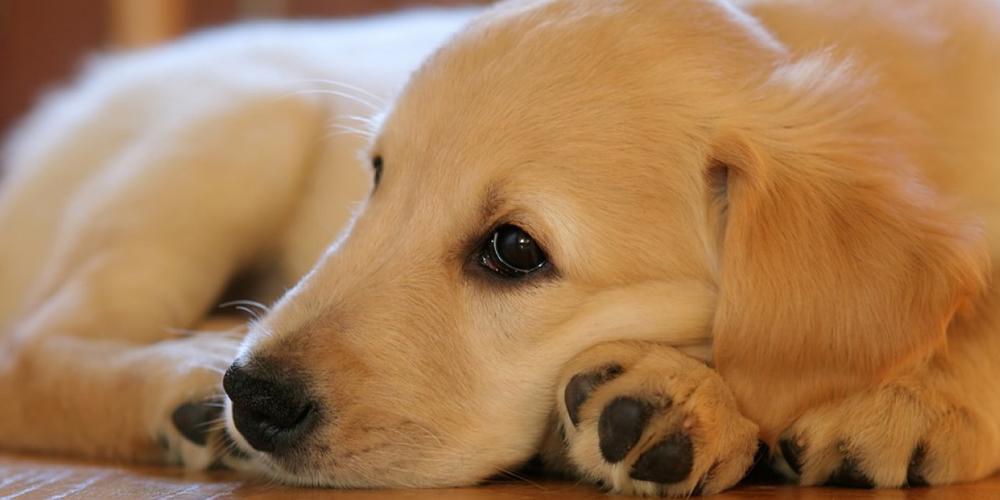
Certain injuries, illnesses or symptoms are very easy to spot and are so obviously severe they are potentially life-threatening.
Some others still are life-threatening but you may not be aware of their severity.
The following is a list of injuries and symptoms that if you spot them, you simply MUST call the emergency vet right away, with no delay.
In these situations, every minute that passes without your Golden receiving medical care could potentially lead to fatality.
So read, remember and learn to recognize and act upon the following symptoms and warning signs:
- Falling unconscious or collapsing.
- Eye problems, squinting for more than just a few minutes.
- Cuts, bites and wounding.
- Hit by a motor vehicle or any other serious blows or falls.
In any situation where your Golden Retriever is showing any of the above symptoms or you fear an event such as those listed above has occurred, call the emergency vet right away. It’s better to be safe than it is to be sorry.
Your vet will not be annoyed if you call and it turns out to be a false alarm, but if it’s a real emergency and you don’t call, the result could be catastrophic.
In an emergency it’s also strongly advised that you do call the emergency vet and follow their advice. DO NOT take your dog and drive to the nearest vet because in some cases the vet you drive to may not be able to take you in.
More Common Skin Diseases And Their Symptoms Found In Golden Retrievers:
- Lick Granuloma – results from the dog’s urge to lick the lower portion of his legs.
- Sebaceous Adenitis – hereditary disease in which the sebaceous glands become inflamed and lead to hair loss
- Seborrhea – chronic inflammatory skin disease that includes the excessive discharge of sebum from the sebaceous glands
- Sebaceous cysts – swelling in the skin arising in a sebaceous gland, typically filled with yellowish sebum.
- Lipomas – a benign tumor of fatty tissue
What Role Does Health Play In The Appearance Of My Dog’s Coat And Skin
Illness or stress, especially if it is chronic or long-standing, will affect the appearance of your dog’s coat, particularly its shine and texture, and many dogs will shed excessively when they are under stress. Some of the more common examples of diseases that can affect your dog’s coat include hormone imbalances or other metabolic problems, digestive disturbances such as chronic diarrhea, parasites, both internal and external , and cancer. Even arthritis or obesity can cause skin problems such as dandruff or matting if the dog is unable to groom itself properly.
“Illness or stress, especially if it is chronic or long-standing, will affect the appearance of your dog’s coat.”
Many skin conditions will affect both the shininess and the appearance of your dog’s fur. Allergic skin disease and seborrhea cause itching and changes in the normal production of skin oils, resulting in a dull coat and excessive shedding, either in patches or over the entire body.
If your dog’s skin or coat problem is caused by an underlying health issue, the general health of the skin and the quality of the hair often improve dramatically when the illness is brought under control through treatment, which may include dietary changes.
When Should You Be Concerned About Your Golden Retrievers Underweight
After you know about the ideal weight of your Golden Retriever, it is essential to maintain your pal weight at least at the baseline. Furthermore, the baseline is a criterion to determine whether your dog is getting too thin or not.
Usually, more than 10% weight loss of your pal is a huge problem. Besides this, sudden drastic weight loss and excessive deviation in weight is also something that you must worry about in your pal.
Therefore, when your pet loses more than 15% of weight within a week, then it might be having a fatal health issue. Thus, visit the Vet immediately.
Further, a fluctuation of two to three kilograms in your dog’s weight is normal. It might be due to water loss or gain, change in bowel movement, dehydration, or change in exercise.
Besides this, some Golden Retrievers have a higher metabolism. So, these dogs might be underweight and healthy without signs of health problems. In addition, you should understand that, like humans, the weight of your pal also fluctuates a little weekly or daily.
But how to know whether your Golden Retriever is underweight or not?
How Does Nutrition Influence The Appearance Of My Dog’s Hair And Skin
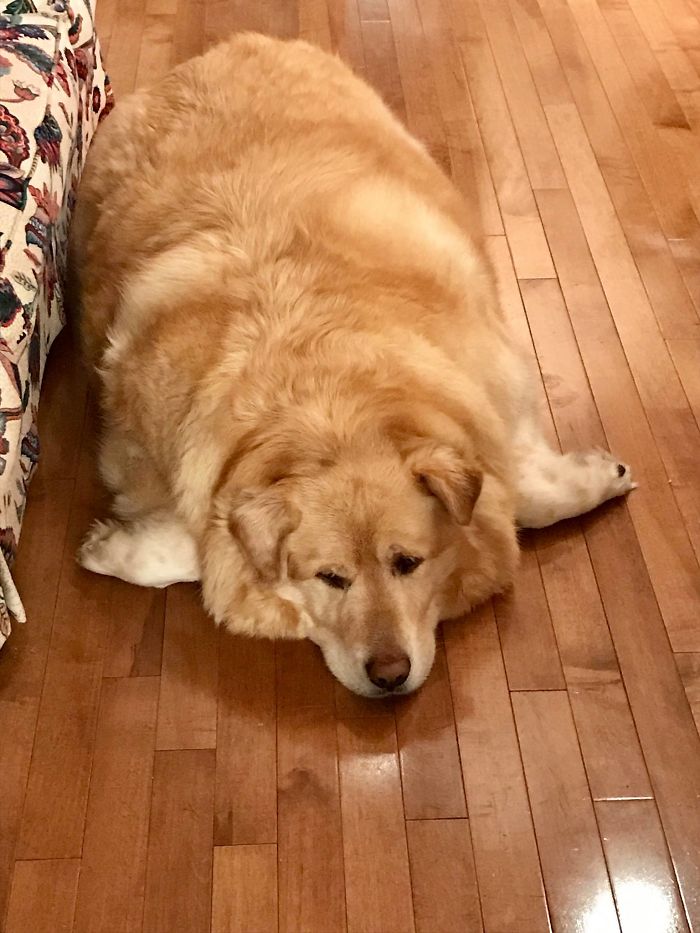
The skin is the largest organ of the body, and the cells of the skin turn over rapidly. For most dogs, virtually all of the skin is covered with hair, which is either being shed regularly or, in non-shedding breeds, is growing constantly. In order to maintain the skin and hair in a healthy state, your dog requires a properly balanced diet that contains high quality digestible proteins, carbohydrates, fats, minerals and vitamins, as well as provides the appropriate number of calories to meet its energy needs.
If the nutrients are not digested well and are of poor quality, not only will they be unavailable to meet the body’s needs, but they will also cause the liver and kidneys to work harder to eliminate the indigestible waste products. The ideal diet should be individualized to your dog’s specific life stage and health status. In all cases, quality and balance are the keys to good nutrition.
A dog whose diet is inadequate to meet his dietary needs will have a dull, dry hair coat and will often shed excessively. For more information about dog nutrition related to specific conditions, it is recommended that you read the appropriate client education handouts and discuss the best nutrition plan for your dog with your veterinarian.
Comparing An Overweight Golden To A Human: Getting Some Perspective
Here’s a little fun exercise : I’m going to compare a Golden Retrievers ideal weight and one carrying excess weight, to myself and me carrying excess weight.
If you have a Golden whose ideal weight is 70 pounds and they actually weigh 85, this is 21.5% of excess weight.
I weigh about 11 stone or 154 pounds. If I was 21.5% overweight, I would be carrying an extra 33 pounds or 2.4 stone, making me 187 pounds or almost 13.5 stone.
This is the equivalent of me carrying a 3-year-old child around with me all day, every day. And that’s whether I’d be walking, running, or anything.
To me this is astonishing. There’s no doubt I would be slower, more lethargic, and with all that weight, I’m sure jogging or high impact exercise could damage my joints.
But for many people seeing an 85 pound Golden, they rarely give it a second thought or think it at all abnormal.
In fact, most people when they see an ideal weight Golden Retriever actually comment that the dog looks thin and underweight!
Health Conditions To Be Aware Of When You Adopt A Golden Retriever
Everyone loves the Golden Retriever: known for their loyalty, luscious fur, and activeness, they’re practically the perfect puppy friend. And while thinking about our pup getting sick is a heart-wrenching proposition, it’s important to know how our dog’s health may progress as they get older, especially since it often happens when we least expect it. Golden retrievers in particular face some specific types of ailments that all owners should be aware of. Being informed on these 10 common health issues means you can catch them early for medical attention and be in better sync with your beloved pet. Goldens are incredibly lovable, popular dogs and are one of our best companions — so here’s what you need to know to manage their health as thoroughly as you would your own!
How Do I Know Which Food Is The Best For My Golden Retriever Puppy
So, how exactly do you choose the appropriate food for your puppy? Here are a couple of pointers to ensure that you are feeding the right nutrients to your pup:
1. Your puppy’s age
A puppy has a different need for nutrition depending on its age. During their serious growth months, they might need just a little bit more calories than usual, especially if they are often running around, whether indoors or outdoors.
For reference, check our feeding schedule or our growth chart on how much your pup should weigh according to their age.
2. Your puppy’s activity levels
Is your puppy more active at playtime or are they often staying at home and resting? Consider changing your puppy’s dietary needs based on their playing habits. A more active puppy will need more calories while a pup that often rests indoors needs to cut down on the fats and carbs.
Moreover, protein is also a good muscle builder if your pup tends to be the sporty type .
3. Health history
Some puppies have a certain health history that makes them allergic to certain food types. In some cases, they may also lack nutrition since they are prone to certain illnesses.
To know more about your puppy’s health history, you can talk to the breeder about it. Moreover, many breeders may even show you health screening certificates to assure transparency for you and your puppy.
4. Ingredients of the food
5. Food packaging
Best Healthy Weight Gain Recipes For Underweight Golden Retriever
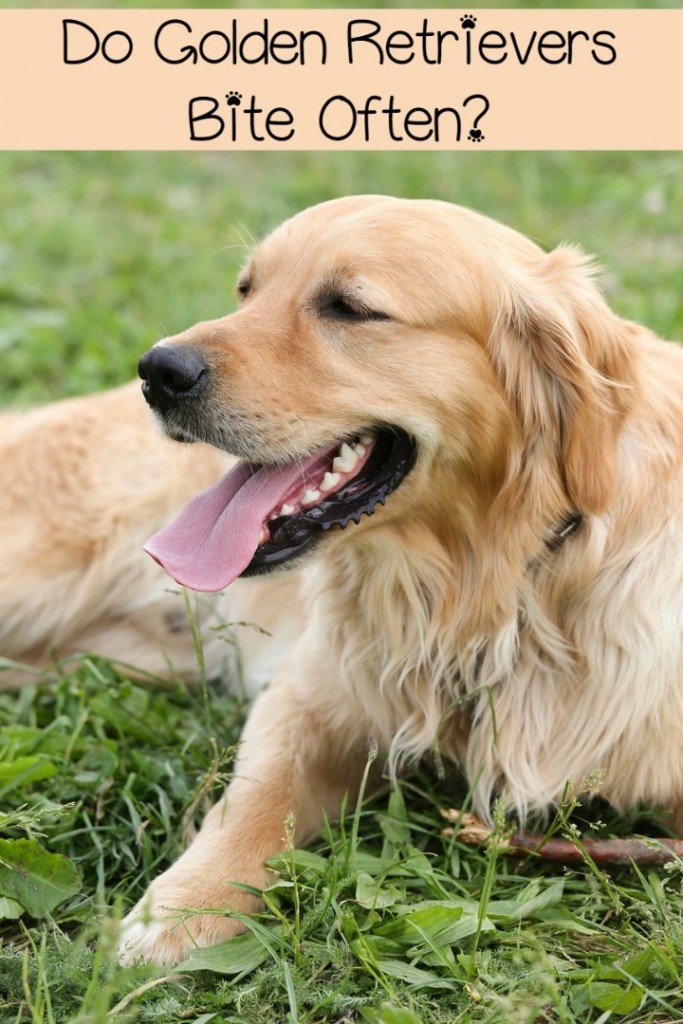
Apart from whole foods, you can even try some recipes to increase your Golden Retriever’s weight. Like:
- Dehydrated beef mix: mix beef, sweet potatoes, and kale. Then, boil or steam them. Finally, apply some water and serve.
- Ocean chews: Peel off the skin of fish like salmon, tuna, sardines, etc. And then steam it. These omega-rich promote a healthy and skinny skin coat in your pal.
- Bone broth pours overs: Mix the chunks of meat and veggies with bone broth. Then, add enough water and leave it to boil for few minutes before serving.
- Parmesan pecks: Snackable parmesan biscuits are tasty and liked by most dogs. Besides this, these pecks make it easier to control the number of calories your pal gets in each bite.
Is Your Golden Retriever Overweight How To Check For Ideal Weight
Because the ideal weight of a Golden can vary by quite a margin, rather than using scales the best way to check yours isn’t overweight is to do it by sight and feel.
Every 2 weeks or so, perform the following checks to see how your Goldens weight is faring and adjust their food intake and exercise accordingly.
When Should I Be Concerned About My Golden Retrievers Weightloss
Knowing the average weight for YOUR fully grown Golden Retriever is essential; it is your dog’s baseline, and it is more important than a standard range. The baseline is one of the main criteria in determining if your Golden Retriever is becoming too skinny.
Weight loss over 10% of your Golden Retriever’s normal body weight would be a cause for concern. Knowing the average or “normal” body weight for your Golden Retriever provides a baseline for your dog, and excessive deviations from that baseline often indicate a potential problem.
Consider a large adult female Golden Retriever with a breed standard weight of 65 pounds. If that female Golden lost 15% of its average body weight, that would equate to a near 10-pound loss and a weight of 55 pounds.
Notice that 55 pounds still falls within the breed standard or normal range for a female. However, a 15% weight loss from a dog’s normal weight would most definitely raise alarm bells and warrant a visit to the vet.
Ranges are based on averages for most dogs within a breed; whereas, knowing your dog’s normal healthy weight is specificto it as an individual.
Keep in mind that just like humans, weight can fluctuate daily and weekly.
For example, a two-pound gain or loss might not be a reason to panic, especially if your dog is eating and seems otherwise healthy. It may just be water loss or gain, bowel movement, dehydration, or other normal fluctuations.
What Are The Physical Signs My Golden Retriever May Be Too Thin
Often the first indications we have that our Golden Retriever is too skinny are the physical signs. Often these become the first indications that there is a problem, and we need to contact our veterinarian.
Physical signs of an underweight or “skinny” Golden Retriever, include:
- Ribs and backbones visible from a distance.
- Very little or no body fat.
- Ribs may be visible and easily felt.
- The curve from waist to hips is excessive and very obvious.
This poor guy is grossly underweight and malnourished. Notice the protruding hip, back, and rib bones, and excessive abdominal taper.
Keep in mind that a Golden Retrievers long coat may make the physical signs a bit more challenging to see easily. A very pronounced taper from waist to hip is one way to tell, and using your hands to feel for protruding ribs, shoulders, and backbones is also helpful.
If you’re concerned about your Golden Retrievers being too skinny, call your veterinarian immediately. Your veterinarian may ask that you bring your dog in for an examination. Identifying an issue early on ensures you can work with your veterinarian to develop a structured plan to address the problem.
How Do I Make My Golden Retriever Comfortable With Ear Cleaning
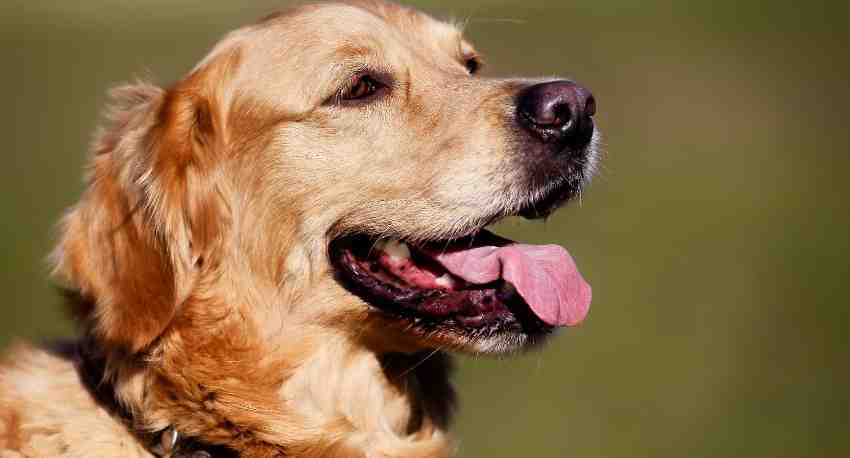
Retrain older dogs. Puppies can be trained to get comfortable with ear cleanings. However, older dogs may struggle with it more. Especially if they aren’t used to weekly cleanings or haven’t had their ears cleaned at all. You can retrain these dogs by giving them treats after following a “Sit” command or being comfortable after you touch their head and ears.
Treats, treats, treats! When you first start the ear cleaning process, you may have to give your dog a treat after each and every step. This means a treat after you touch their ear, when you put in the solution and when using cotton balls. You can fade the number of treats you give your dog as he gets more comfortable with the process.
Consistency is key. Similar to having a routine cleaning schedule, being consistent with treats and cleaning can help make your dog more comfortable with ear cleanings. They will know what to expect as well as how it will feel when they get their ears cleaned. This can help reduce anxiety and discomfort when you initially start cleaning their ears.
Touch their ears! Help desensitize your dog to getting their ears touched. You can do this by treating them when you touch their ears during cleanings. You can also play with their ears when they are relaxing next to you on the couch. Or when you are playing catch, you can massage their head and rub their ears.
What Are The Different Types Of Hair Coat That A Dog Might Have
Selective breeding has led to the development of dogs with a number of different types of coat characteristics. Some breeds have hair that grows continuously and does not shed. These breeds of dog require regular trips to the ‘doggy salon’ for a shampoo and cut. Breeds such as Siberian Huskies, Alaskan Malamutes and many Retrievers have long, thick hair coats with both an outer coat of guard hairs and an undercoat of fine hair that serves as an insulating layer. These breeds often go through two heavy seasonal shedding cycles per year , during which much of the undercoat falls out in clumps. Many short-haired breeds lack a distinctive undercoat, and these breeds often shed hair in low levels all year round.
What Can I Do To Keep My Golden Retriever At A Healthy Weight
The most effective ways to ensure your Golden Retriever maintains a healthy weight is to:
- Feed it healthy, high-quality food.
- Provide the appropriate amount of food for its normal body weight and activity level.
- Ensure your dog gets adequate physical activity – not too much and not too little.
- Don’t feed table scraps or overfeed snacks, which can cause picky eating.
Most Golden Retrievers are food-driven and enjoy eating. Therefore, if you need to increase the amount of food, it is usually well received by your dog. After all, what Golden doesn’t like to eat more.
As well, Goldens are highly active dogs so getting them to exercise is typically not a problem. An inactive dog is usually a byproduct of an inactive owner. It’s rare for a Golden to be overexercised.
Keeping your Golden Retriever at a healthy weight is not all that different from us humans if you think about it. A healthy, well-balanced diet, regular exercise, and keeping our intake of calories the same as our expenditure is pretty much all it takes for us.
Apply that same formula to your Golden Retriever and adjust as necessary, and there should be few issues.
What Type Of Shampoo Should I Use To Wash My Golden Retriever
According to many canine experts, it’s not recommended to wash your dog using dish soap or human shampoo. This will most definitely strip your dog of its natural oils. Plus, shampoo made for humans is too acidic for regular use on a Golden Retrievers hair and skin.
The best shampoo to use is one that’s specially formulated for dogs. It’s recommended that you use a highly-rated oatmeal shampoo like this one at amazon.com to help in the nourishment of their coats. It’s organic, soap-free, and contains vitamin E and Aloe Vera to naturally soothe and moisturize sensitive or dry skin.
While using this shampoo, you should wash your pup from front to back, gently scrubbing your dog’s fur to get the dirt that’s attached to the undercoat.
When drying your Golden Retriever you can choose to use an old dog towel, but many people choose to use a blow dryer on their dog in order to make sure that all their fur is dry. A double-coated dog, like a Golden Retriever, can stay wet for hours, even after being towel dried so a hair dryer can really speed up this process.
A pet-friendly hair dryer like this adjustable speed pet hair dryer on amazon.com, can also help with regular grooming. It’s temperature controlled so it won’t get too hot for your pooch.
Is Your Golden Retriever Suffering In Silence From Joint Pain
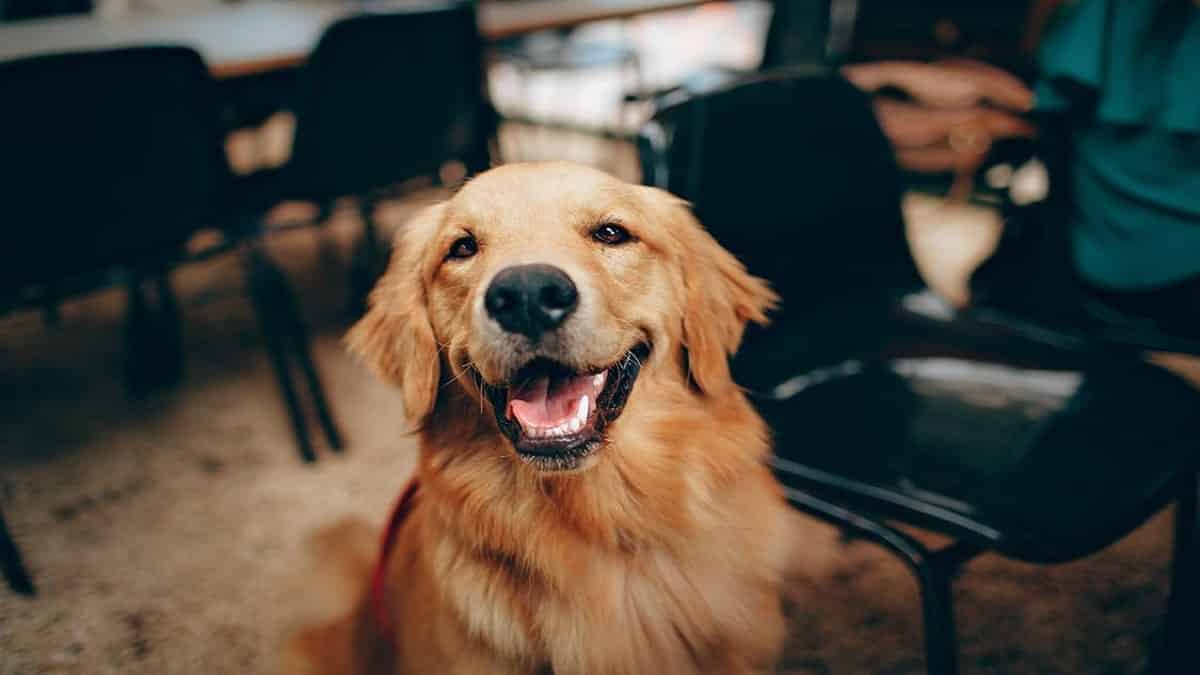
The best time for you to read this article is 5 years ago. The second best time is right now.
That’s because the sooner you recognize and react to signs of joint pain in your Golden Retriever, the better the quality of life your dog will have.
Maybe you first noticed your dog not running to greet you as you walked in the door after a long day away. Or perhaps it was a whimper while getting up or chasing his favorite ball. This could be a sign of canine arthritis.
Canine arthritis is more common in large breeds like Golden Retrievers, but it also affects dogs of all sizes and shapes. Arthritis is caused when the smooth covering over bones, known as cartilage, begins to break down. The bones begin to rub at the joint where they come together, causing pain and discomfort because the protective layer either is worn down or no longer exists.
When this starts to happen, you may notice some of these common signs and symptoms:
- Decreased interest in walking, running, playing
- Whimpering and yelping with movement
- Difficulty rising from a resting position
- Reduced movement in joints or limping
- Falling behind on walks
- Personality changes, such as lethargy or aggression
Frequent exercise is great for your dog. That’s a no-brainer. Not only is it excellent for your pet, but it’s also helpful to your personal well being. So go out and enjoy some fresh air…run, walk, throw a ball. You and your companion will value spending time together.
Fat Golden Retriever: What To Do When Your Dog Puts On Weight
Obesity has become a huge problem for our pet dogs, including fat Golden Retrievers.
A 2017 clinical survey done by the Association for Pet Obesity Prevention found 56 percent of dogs surveyed in the U.S. were classified as being clinically overweight.
For the gorgeous Golden Retriever, the data is even more distressing.
A 2012 study by the APOP found that almost 63 percent of Golden Retrievers were overweight or obese.
These are sobering statistics for one of the world’s most beloved breeds.
The friendly and devoted Golden is instantly recognizable for their kind eyes; floppy ears; and long, lustrous coat of golden fur that gives them their name.
Bred as a Scottish gundog in the early 1800s, the energetic breed was built to retrieve waterfowl.
This muscular dog bears a wolflike physique and moves with a graceful, athletic bearing.
Swimming, fetching, running and jumping come naturally for this active dog.
So why is the Golden Retriever getting fat in such alarming numbers?
Golden Retrievers: What’s Good About ’em What’s Bad About ’em
Golden Retriever temperament, personality, training, behavior, pros and cons, advice, and information, by Michele Welton, Dog Trainer, Behavioral Consultant, Author of 15 Dog Books
The Golden Retriever’s kindly expression says it all. This is one of the finest family dogs in the world: cheerful, demonstrative, trustworthy with everyone, and forgiving of any mistakes made by inexperienced owners.
Give this breed two brisk walks each day, play fetch games, and take him out for a good run once a week, and he is adaptable to almost any lifestyle.
Friendly with everyone , his bark is welcoming rather than protective.
You must control his tendency to chew on objects and to mouth your hands — provide a box filled with toys so he can carry things around in his mouth.
A Golden Retriever remains enthusiastically puppy-like for many years, so early obedience training is required to instill calmness and good manners.
Eager to please and wonderfully responsive, he is nonetheless distracted by exciting sights and sounds, so you must be both patient and persistent.
The mind and heart of a Golden is sweet and gentle, but his body is robust — until he’s taught not to pull on the leash, you’ll need good biceps to walk him.
If you want a dog who…
- Is large, athletic, and natural-looking
- Has a pretty feathered coat
- Has a cheerful, tail-wagging nature
- Is steady-tempered and dependable with everyone
- Is peaceful with other animals
- Is eager to please and very responsive to training
Taking Your Golden Retrievers Hair Length Into Consideration
Did you know: the shorter your Golden Retrievers hair is the less often you have to bathe them? Although this may be a fun fact, it’s not recommended to cut your dog’s hair short. Some people even go so far as to shave their Goldens!
This, however, is not recommended! When you shave a Golden Retriever you are exposing their skin and undercoat to the harmful environmental elements around them, including the sun and temperature extremes. Shaving a Golden Retriever can not only eliminate the dog’s ability to regulate their body temperature, it can also permanently damage their coat.
It should be noted that combing your dog often is actually more beneficial for your dogs skin and coat than it is to bathe them. Brushing your dog daily or weekly is not only encouraged, it’s recommended.
Regularly brushing your Goldens fur will go a long way toward a healthy coat that’s free of tangles and parasites.
Over 60% Of Golden Retrievers In The Us Overweight In 2012
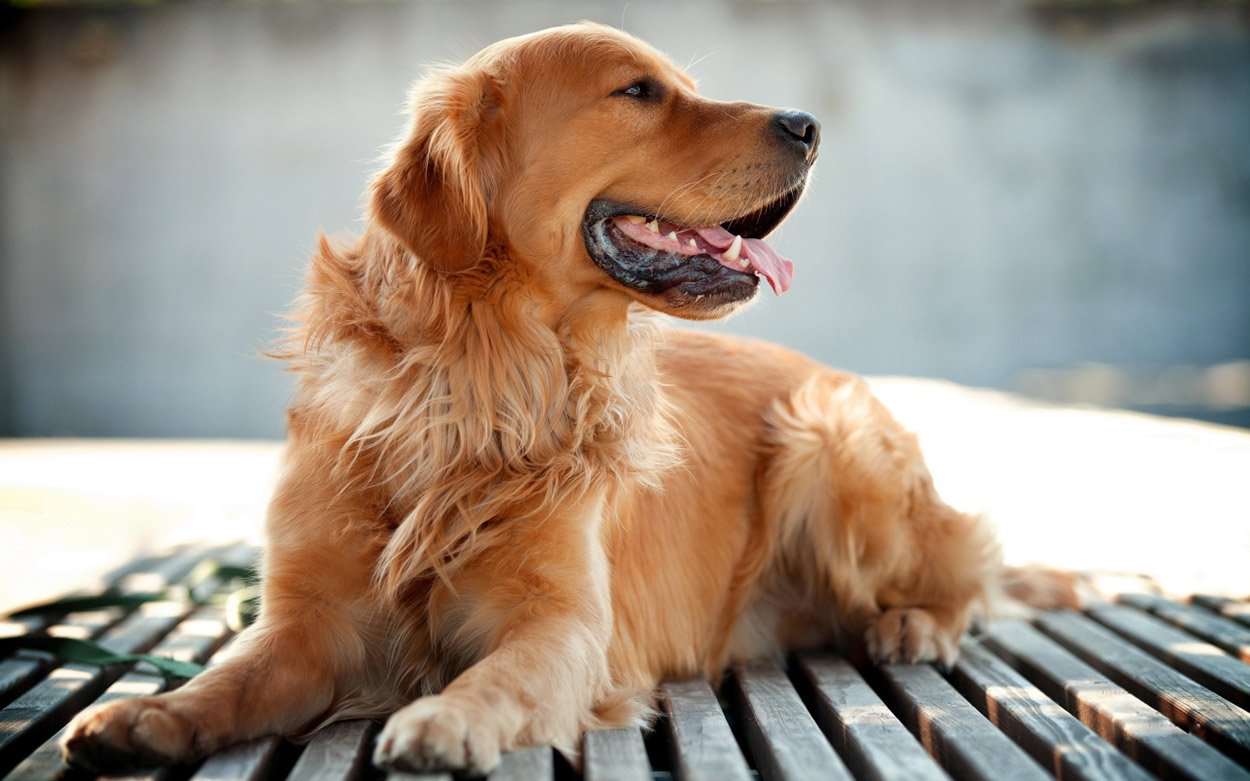
A study by PetObesityPrevention.org in 2012 showed 52.5% of pet dogs in the US were overweight.
Sadly, the survey also revealed: “Veterinary healthcare providers classified…62.7 percent of golden retrievers surveyed as overweight or obese.”
So in fact there were 20% more overweight or obese Golden Retrievers than the US national average. And that’s 20% more than a national average that is already shockingly high.
In the most recent figures available, gathered in 2013, the survey shows 52.6% of US dogs are overweight or obese. So things haven’t improved.
But why is this such a problem?
Dont Free Feed Your Golden And Feed More Than Once Per Day
Some owners feed their dogs and just leave the food bowl down all day, allowing their dogs to help themselves when they feel like it.
If you have an overweight Golden and this is how you feed them, you need to make a change. With constant access to food, a dog’s body starts to work inefficiently and this can lead to weight gain. Maintaining weight works best when fed on a fixed schedule.
Secondly, you should feed your dog twice each day and not just once. Feed them first thing in the morning and once in the early evening.
If you feed your dog just once each day, their bodies go into a ‘starvation mode’ daily where their metabolism slows for most of the day due to having an empty stomach.
Food absorption becomes highly efficient, and the body tries to hang on to as much fat and energy as possible due to few opportunities to refuel. This promotes weight gain so we want to avoid this.